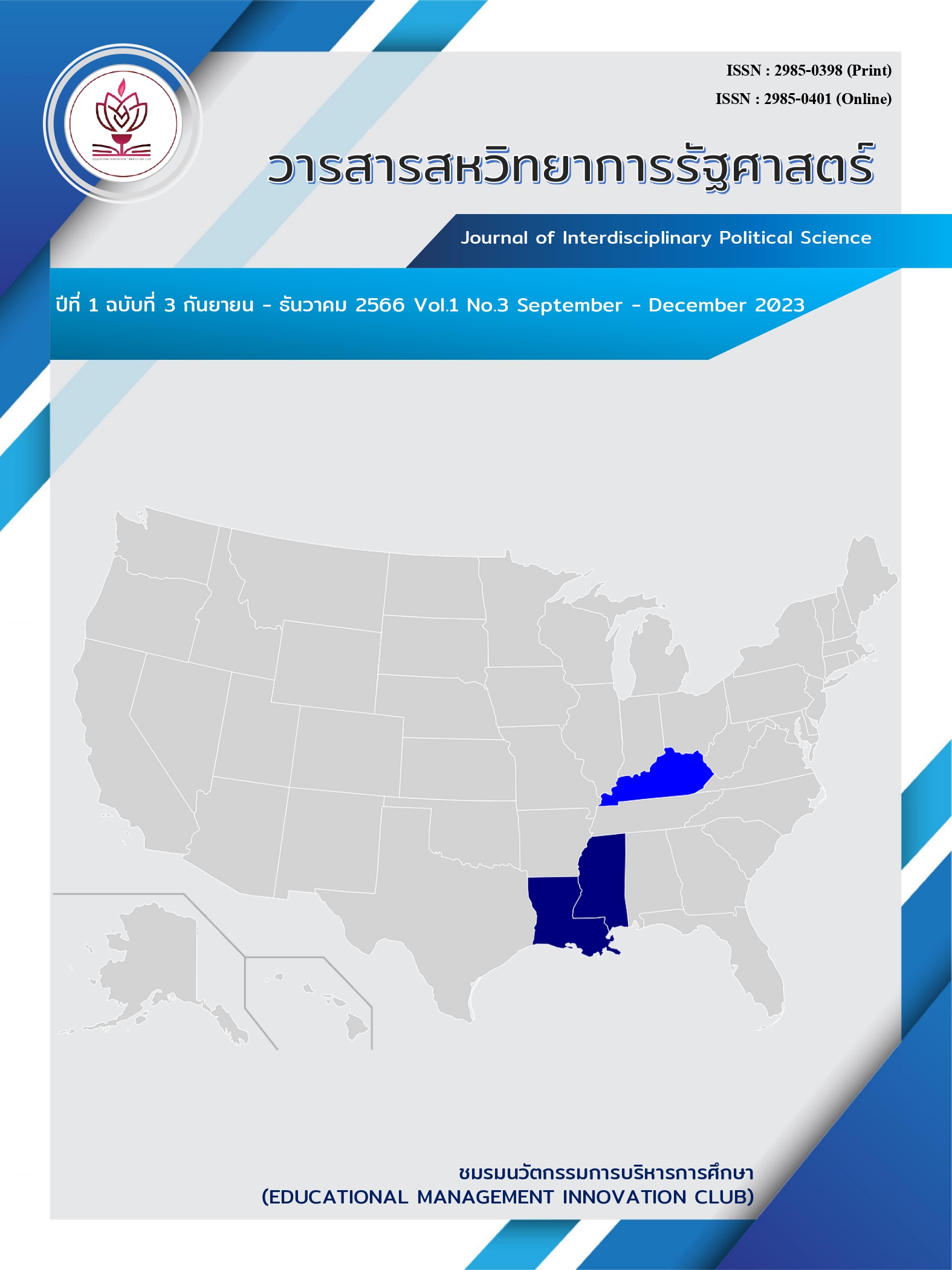Organization Commitment of the Employees Student Loan Fund
Main Article Content
Abstract
This article aims to discuss the subject matter of engagement with the organization. using methods of reviewing and synthesizing previous studies. To be used in this discussion consisted of concepts and theories about organizational commitment, namely (1) the meaning of organizational commitment (2) theories on organizational commitment. and discusses the concepts and theories about motivation in performance: (1) the meaning of motivation (2) the type or element of motivation (3) the importance of motivation affecting work efficiency (4) the importance of Performance satisfaction (5) Theories related to job motivation. Both theorganizational commitment and the performance motivation will be used as a conceptualframework in further research on the organization's commitment to the Student Loan Fund.
Article Details

This work is licensed under a Creative Commons Attribution-NonCommercial-NoDerivatives 4.0 International License.
References
กองบัญชาการศึกษา. (ม.ป.ป.). สืบค้น 24 กุมภาพันธ์ 2563. จาก https://edupol.org/eduOrganize (/eLearning/generalStaff/doc/group15/01/02.pdf.
กานดา จันทร์แย้ม. (2546). จิตวิทยาอุตสาหกรรมเบื้องต้น. กรุงเทพฯ: โอเดียนสโตร์.
จารุณี ธรนิตยกุล. (2541). ความสัมพันธ์ระหว่างการใช้อำนาจของหัวหน้างานกับความพึงพอใจในงานและความผูกพันต่อองค์การของผู้ใต้บังคับบัญชา. กรุงเทพฯ : มหาวิทยาลัยธรรมศาสตร์.
โชติกา ระโส.(2555).แรงจูงใจในการปฏิบัติงานของบุคลากร มหาวิทยาลัย ราชภัฏนครสวรรค์ (ปริญญานิพนธ์ กศ.บ.) (การอุดมศึกษา).กรุงเทพบัณฑิตวิทยาลัยมหาวิทยาลัยศรีนครินทรวิโรฒ.
ฐิติวัชร์ ธรรมโชติวรศิริ. (2558). แรงจูงใจในการปฏิบัติงานของพนักงานสายช่างบริษัทซ่อมบำรุงขนาดเล็กที่ให้บริการในโรงงานผลิตปูนซีเมนต์ขนาดใหญ่เขตอำเภอแก่งคอย จังหวัดสระบุรี. การประชุมวิชาการทางธุรกิจและนวัตกรรมทางการจัดการ ระดับชาติและนานาชาติประจำปี 2558, 502-506.
ธีระ วีรธรรมสาธิต. (2532). ความผูกพันต่อองค์การ: ศึกษาเฉพาะกรณีผู้บริหารระดับหัวหน้า แผนกเทียบเทาของเครือซีเมนต์ไทย. วิทยานิพนธ์รัฐศาสตรมหาบัณฑิต (รัฐศาสตร์), มหาวิทยาลัย ธรรมศาสตร์.
นวพร อัมพวา; และคณะ. (2556). การศึกษาความคิดเห็นของบุคลากรสายสนับสนุนต่อการ ประเมินผลการปฏิบัติงานและความผูกพันต่อองค์การ. การประชุมวิชาการประจำปี สังคมศาสตร์ มนุษยศาสตร์ และศึกษาศาสตร์,2-18.
ภรณี กีรติบุตร. (2529).การประเมินประสิทธิผลขององค์การ. กรุงเทพฯ : สํานักพิมพ์โอเดียนสโตร์.
วันชัย มีชาติ. (2548).พฤติกรรมการบริหาร องค์การสาธารณะ.กรุงเทพฯ: แห่งจุฬาลงกรณ์มหาวิทยาลัย
วิกิพีเดีย สารานุกรมเสรี. (2561). แรงจูงใจ. วันที่สืบค้น 29 มีนาคม 2563, จาก https://th.wikipedia.org/wiki/แรงจูงใจ
ศักรินทร์ นาคเจือ. (2557). ความสัมพันธ์ระหว่างแรงจูงใจกับประสิทธิภาพการปฏิบัติงานของข้าราชการกรมการอุตสาหกรรมทหาร ศูนย์การอุตสาหกรรมป้องกัน ประเทศและพลังงานทหาร.การค้นคว้าอิสระ หลักสูตรวิทยาศาสตรมหาบัณฑิต สาขาวิชาการจัดการทรัพยากรมนุษย์ วิทยาลัยบัณฑิตศึกษาด้านการจัดการ มหาวิทยาลัยศรีปทุม.
สมใจ ลักษณะ. (2549). การพัฒนาประสิทธิภาพในการทำงาน. พิมพ์ครั้งที่ 5. กรุงเทพฯ : เพิ่มทรัพย์การพิมพ์.
เสนาะ ติเยาว์. (2546). หลักการบริหาร. กรุงเทพ ฯ: โรงพิมพ์มหาวิทยาลัยธรรมศาสตร์.
อิศเรศ รุ่งณรงค์รักษ์. (2541). ความผูกพันต่อองค์การ: กรณีศึกษาพนักงานต้อนรับบนเครื่องบิน บริษัท การบินไทย จำกัด (มหาชน). ภาคนิพนธ์บริหารศาสตรมหาบัณฑิตสถาบันบัณฑิตพัฒนบริหารศาสตร์.
เอื้อมพร แอ่มไร่. (2546). ปัจจัยที่ส่งเสริมให้เกิดความผูกพันต่อองค์กร : กรณีศึกษาบริษัท ซีบา สเปลเซียลตีเคมิคอลส์ อินดัสตรีส์ จํากัด (มหาชัย). ภาคนิพนธ์ บธ.บ. (การบริหารธุรกิจ). เชียงใหม่ : บัณฑิตวิทยาลัย มหาวิทยาลัยเชียงใหม่.
Allen, N. J. , & Meyer, J. P. (1990). The measurement and antecedents of affective, continuance, And normative commitment to the organization. Journal Of Occupational Psychology,63(10), 1-18.
Grusky, O. (1966). Career Mobility and Organizational Commitment. Administrative Science Quarterly. 10 (March), 488 – 503.
Kanter, R.M. (1968). Commitment and Social Organization : A Study of Commitment Mechanisms in Utopian Communities. American Sociological Review.33(4), 499-517.
Mowday, T.R., Porter, W.L. & Steers, R.M. (1982). Employee-Organization Linkages The Psychology of Commitment, Absenteeism, and Turnover. New York : Academic Press.
Porter, Lyman. and Steer, Richard M. 1974. Organizational Work and Personal Factors in Turnover and Absenteeism. Psychological Bulletin, 80(1), 603-609.
Steers, R.M. (1977). “Antecedents and Outcomes of Organizational Commitment.” Administrative Science Quarterly, 22, 46-56.
Sheldon, M. E. (1971). Investments and Involvement as Mechanisms Producing Commitment to the Organization. Administrative Science Quarterly. 16, 2 (June): 143-150
Vroom, H Victor. (1964). Work and Motivation. Now York : Wiley and Sons Inc.


